I. Introduction
Panel light have become a popular led lighting solutions due to their sleek design, energy efficiency, and versatile applications. However, with so many options available, it can be difficult to choose the right panel lights for your needs. This guide will help simplify the selection process by explaining the technology behind led panel lights and factors to consider such as color temperature, brightness, and installation methods. We will take you on a step-by-step journey to help you find the perfect panel led lights solution that combines style and function. Let’s dive into the details of choosing the right panel light to brighten up your spaces.
II. Comprehensive understanding of LED panel light
What Are LED Panel Lights?
LED panel lights also known as flat panel lights, are energy-efficient lighting solutions that replace traditional fluorescent ceiling lights with improved lighting quality and aesthetic appeal. They are a popular choice for indoor spaces, offering brighter and safer lighting compared to fluorescent lights. LED panel lights are technologically advanced and offer innovative features that improve our standard of living.
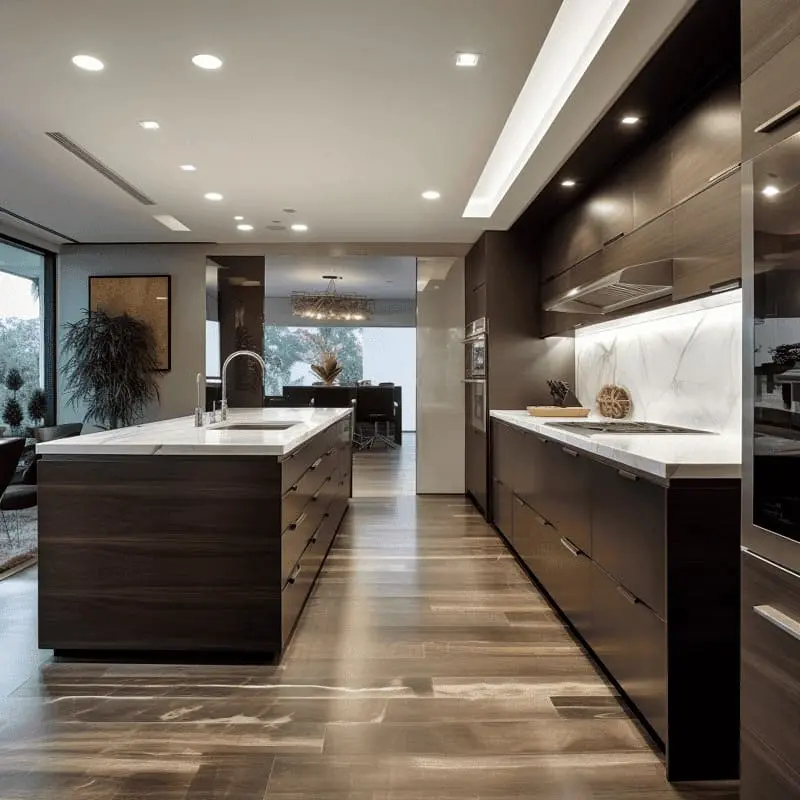
Features of LED Panel Light
1) Slim and Elegant Design: LED panel lights have a slim design and clean lines, so they can easily fit into different styles of architecture and interiors, giving a modern and professional appearance.
2)Uniform Lighting: These lights emit a soft, even illumination across the entire surface of the led panel. This uniform distribution of light helps reduce shadows and glare, creating a more comfortable and visually pleasing environment.
3)Energy Efficiency: LED technology is known for being energy efficient. LED panel lights use much less energy than traditional lighting sources, which can help lower electricity bills and reduce our impact on the environment.
4)Long Lifespan: LED panel lights have long operational life, often exceeding tens of thousands of hours. This longevity reduces maintenance costs and the need for frequent replacements.
5)Dimmable Options: Many LED panel lights offer dimming capabilities, allowing you to adjust the light intensity to suit different tasks and moods.
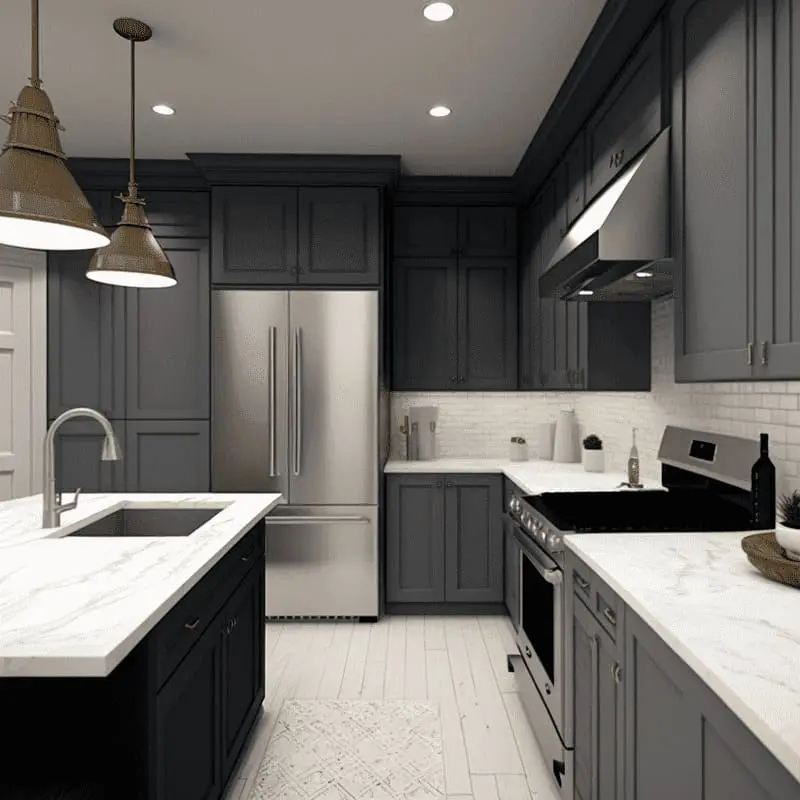
Benefits of LED Panel Light
- Bright and Comfortable Lighting: LED panel lights give off bright and smooth lighting that looks like natural daylight. This type of lighting is perfect for improving visibility and making people feel more comfortable in spaces like offices, classrooms, or stores.
- Reduced Glare and Eye Strain: The even distribution of light in LED panel lights minimizes glare and reduces eye strain, creating a more comfortable and productive environment for extended periods.
- Space-Saving: LED panel lights have a slim design that works well in areas with low ceilings. They provide good lighting without making the room feel small.
- Instant On: LED panel lights turn on immediately without the delay of traditional fluorescent lights. This is especially useful in situations that require immediate lighting.
- Customization: LED panel lights are available in different sizes, shapes, and color temperatures, so you can adjust the lighting to meet your specific needs and desired look.
Applications of LED Panel Lights
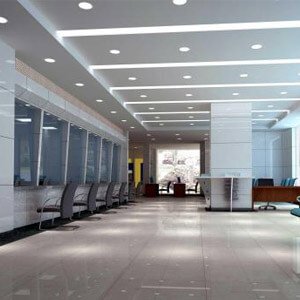
- Commercial Spaces: LED panel lights are commonly used in offices, conference rooms, and reception areas. Their even and non-glare lighting helps people to focus and be more productive at work.
- Educational Institutions: LED panel lights provide uniform illumination, enhancing the learning experience in classrooms and lecture halls.
- Retail Settings: These lights are preferred in retail environments to showcase products with accurate color rendering and to create a welcoming shopping atmosphere.
- Healthcare Facilities: LED panel lights offer precise and comfortable lighting for medical examination rooms, waiting areas, and corridors.
- Residential Spaces: LED panel lights are also becoming popular in homes, especially in kitchens, bathrooms, and living areas, where their sleek design and efficient lighting enhance the overall ambiance.
Different Types of LED Panel Light
LED panel lights are available in a variety of types, each one specifically designed to meet unique lighting needs and design preferences. The market offers different shapes and sizes, along with varying installation methods. Here are some of the key types of LED panel lights available in the market:
1. Square LED Panel Light
These panel lights are the most common and versatile type available in the market. They are available in various sizes, typically ranging from 1×1 feet to 2×2 feet, making them suitable for a wide range of applications. From offices and commercial spaces to residential settings, square LED panel lights can be used almost anywhere with great results.
2. Rectangular LED Panel Light
Similar to square panels, rectangular panel light provide a different dimension to lighting design. They are often used in longer corridors, hallways, or above tables in dining areas. These panel lights come in sizes such as 1×2 feet and 2×4 feet.
3. Round LED Panel Light
Round LED panel lights offer a departure from the traditional square or rectangular design, and are a great option for creating unique lighting arrangements or for spaces where a softer, more organic shape is desired. They are frequently used in modern interiors to add a touch of creativity.
4. Color Changing LED Panel Lights
These modern LED panels give you the ability to change the color of the light to fit different settings or moods. With color adjustable panel light, you can switch from warm white to cool white, imitating the natural shifts in sunlight during the day. They are often used in places that need adaptable lighting, like offices and stores.
5. Edge-Lit vs. Back-Lit LED Panel Lights
- Edge-lit LED Panels: These panels have LEDs situated around the edges of the fixture, and the light is directed towards the center using a light guide plate. They are usually thinner and distribute light more evenly.
- Back-lit LED Panels: These panels have LEDs located directly behind the light guide plate. They typically produce brighter and more concentrated illumination in the center of the panel. Back-lit panels may be preferred when higher brightness levels are necessary.
6. Surface-Mounted vs. Recessed LED Panel Lights
- Surface-Mounted LED Panels: These panels are installed directly on the surface of the ceiling. They are suitable for spaces with limited ceiling height or where a more contemporary design is desired.
- Recessed LED Panels: Recessed panels are installed within the ceiling, usually requiring a hole to be opened in the ceiling, creating a clean and seamless look. They are often used in modern interiors where a sleek appearance is essential.
7. Dimmable LED Panel Lights
Many LED panel lights offer dimming options, allowing you to adjust the light intensity to your preference. Dimmable panels are popular in environments where versatile lighting control is required, such as conference rooms, restaurants, and homes.
8. Emergency LED Panel Lights
These panels include a battery backup that provides illumination during power outages. Emergency LED panel lights are crucial for maintaining visibility and safety in critical situations, making them common in commercial buildings, hospitals, and public spaces.
III. Assessing Your Lighting Needs
Understanding the purpose of the lighting is the first step in selecting the panel light, you need to know why you want them. Lighting can do lots of things, like changing the feel of a room or helping with tasks. Knowing what you want your lights to do will help you choose the right LED panel lights for you.
Purpose of LED Panel Lights
1. Ambient Lighting: Use LED panel lights to create a comfortable and balanced lighting atmosphere in areas where you need welcoming and consistent lighting, such as living rooms, hallways, and common areas.
2. Task Lighting: For tasks that require focused and bright illumination, like reading, cooking, or working, strategically place LED panel lights to provide the necessary lighting without straining the eyes. The even distribution of light ensures that tasks can be performed easily and accurately.
3.Accent Lighting: LED panel lights can also be used as accent lighting to draw attention to specific features or areas in a room. You can create focal points and change the ambiance to suit different occasions by using dimmable panel lights or those with adjustable color temperatures.
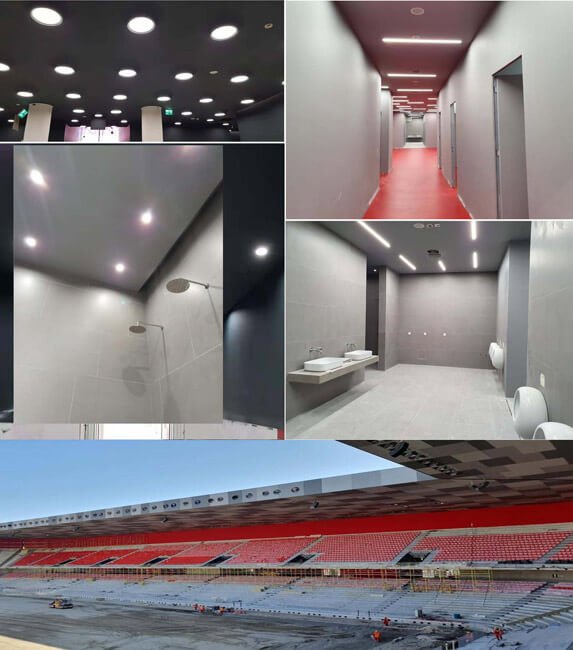
Improving Looks and Performance
1) Looks: LED panel lights make a space look great. They have a modern design that fits well with contemporary interiors, and they give off even light to make everything look nice. Pick panel lights that go with your style to make a pleasant and attractive environment.
2) Performance: LED panel lights are useful for more than just looks. Depending on what you need, these lights can make a space more functional by giving the right amount of light for different activities. Whether you’re reading, cooking, or showing off art, panel lights work well and are a flexible solution.
IV. Considering the Space
Choosing the panel light isn’t a one-size-fits-all solution. The right panel light for your space depends on the characteristics of the space. Here’s how to choose the best lighting solution for your space:
Room Size, Ceiling Height, and Installation Options
1)Room Size: The size of your room affects how much lighting you need. If your room is large, you may need more than one panel light to make sure the entire space is lit up. For a smaller room, strategically placed panels can provide enough light without making the space feel too bright.
2)Ceiling Height: The height of your ceiling affects how your panel lights will look and work. If your ceiling is high, consider getting panel lights that shine down. If your ceiling is lower, get surface-mounted panel lights that don’t take up too much space.
3)Installation Options: Different installation methods cater to various aesthetics and room types. Recessed panel lights offer a sleek and seamless appearance, ideal for modern interiors. Surface-mounted options are versatile and convenient, especially for rooms with limited ceiling depth. Suspended panels can add a unique design element, creating a sense of depth in the lighting arrangement.
Choosing the Right Size and Shape
Choosing the right panel lights for your room is important to make sure the lighting is balanced. Here are some things to keep in mind:
- Consider the size of the room when selecting panel lights. A good rule is to choose panels that provide around 20-30 lumens per square foot for general lighting.
- For task areas like kitchens or workstations, you may need brighter lights.
- Think about the shape of your room as well. Rectangular or square panels work for most spaces. Round panels can add some creativity to your design and are great for spaces where looks are important.
V. Color Temperature and Lighting Effects
color temperature plays a big role in creating a certain feeling in a room. Understanding the different colors of light can help you make the environment feel how you want it to. Here’s what you need to know about color temperature and how it affects lighting.
What is Color Temperature?
Color temperature tells you how warm or cool a light is. You measure color temperature in Kelvins (K). Lower Kelvin values, like 2700K, produce a warm, yellowish light. Higher Kelvin values, like 6500K, produce a cooler, bluish light.
How Color Temperature Affects Mood
The color temperature of your lights affects how you feel in a room. Warmer tones, from 2700K to 3500K, feel cozy and inviting. These are great for places like living rooms, bedrooms, and dining areas. Cooler tones, from 4000K to 5000K, work well in task-oriented areas like kitchens, home offices, and workspaces. They help you feel alert and focused.
Choosing the Right Color Temperature
Choosing the right light color depends on the room’s purpose and the mood you want to create. Here are some tips:
- Warm Tones (2700K – 3000K): Use warm tones in places where you want to feel cozy, like bedrooms and living rooms. They make the room feel inviting.
- Neutral Tones (3500K – 4000K): Neutral tones work well in general living areas, hallways, and corridors. They provide clarity without being too bright.
- Cool Tones (5000K and above): Use cool tones in areas where you need to see well, like kitchens, bathrooms, and workspaces. They help you stay focused.
Matching Light Colors
If you have lots of different lights in one room, try to use the same color temperature for all of them. This will make the room feel more unified and visually appealing.
VI. Energy Efficiency and Lumens
When it comes to selecting the panel light, energy efficiency and brightness are key factors to consider. Understanding the concept of lumens and the energy-saving benefits of LED panel lights can help you make an informed decision that not only enhances your space but also contributes to a more sustainable future.
1)Understanding Lumens
Lumens measure how bright a light is, while watts measure how much energy it uses. The more lumens a light has, the brighter it is. This is important when comparing different panel lights and their illumination abilities.
2)Balancing Brightness and Efficiency
LED panel lights are very bright while using very little energy. This balance is possible because of the advanced technology behind LEDs. These lights turn electricity into visible light very efficiently, which means they don’t waste energy as heat. This lets you have bright lights without worrying about your budget or the environment.
3)Calculating Lumens for Your Space
To determine the appropriate lumen output for your space, consider the room’s purpose and size. General lighting requires around 20-30 lumens per square foot, while task areas may need higher levels of illumination. For example, a living room measuring 200 square feet would ideally require panel lights with an output of 4000 to 6000 lumens.
VII. Dimming and Control Options
Dimmable panel lights are a great option for those who want to have control over their lighting. They can be adjusted to provide the desired light intensity depending on the task or ambiance required. Whether you need bright task lighting or subtle mood lighting, dimmable lights have got you covered. Plus, they offer more convenience than regular panel lights. If you’re someone who likes to have all the latest technology, you might want to check out smart panel lights. These lights can be controlled remotely using smartphones or smart home systems, giving you even more control over your lighting. With dimmable panel lights, you can create the perfect atmosphere for any occasion, whether you’re working on a project or just relaxing at home.
VIII. Installation Considerations
Choosing the right panel lights is only half the battle; correct installation is also crucial for optimal lighting performance. Different installation methods cater to different design preferences and room types. Let’s explore the installation tips that can impact your panel light decision.
Installation Methods Overview
Panel lights offer several installation methods, each with its own visual impact and practical implications:
- Recessed Installation: These panel lights are installed within the ceiling, creating a sleek and seamless appearance. This method is suitable for modern and minimalist interiors, providing a clean and unobtrusive lighting solution.
- Surface-Mounted Installation: These panel lights are fixed directly onto the ceiling surface. This option is versatile and convenient, especially for spaces with lower ceiling heights. Surface-mounted lights can also add a subtle design element to the room.
- Suspended Installation: These panel lights are hung from the ceiling using cables or rods. This method adds depth and visual interest to the lighting arrangement. Suspended lights work well in spaces with higher ceilings, creating an eye-catching focal point.
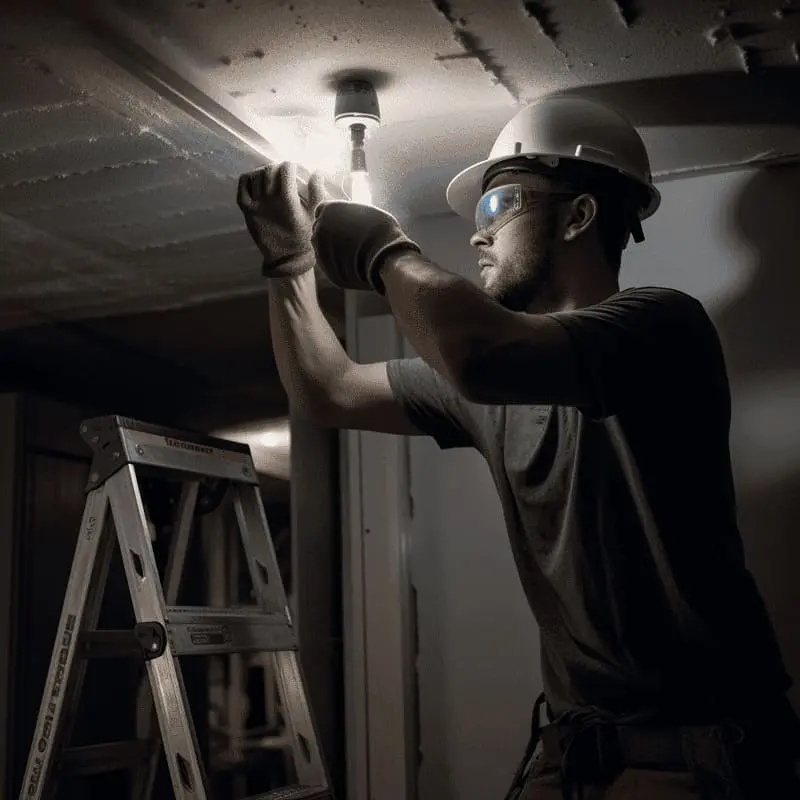
Complexity and Requirements
Consider the complexity of installation when choosing your panel lights. Recessed installation may require ceiling modifications to accommodate the lights’ housing. Surface-mounted options typically involve minimal alterations, making them suitable for both new constructions and renovations.
Suspended installation requires careful planning to ensure the lights are properly supported and aligned. It’s important to account for the ceiling height, the weight of the lights, and the desired visual effect.
IX. Budget and Quality
When choosing panel lights for your space, it’s important to consider the price range. Panel lights come in various prices, which often reflect their quality and features. While there are budget-friendly options available, investing in higher-quality lights can provide longevity and better performance.
Although it may seem tempting to opt for the cheaper option, investing in higher-quality lights can provide better value in the long run. Not only will they last longer, but they will also perform better, reducing the need for frequent replacements and maintenance costs.
However, it’s essential to find a balance between price and quality. Ensure that the panel lights you choose are within your budget and also meet your lighting needs. This way, you can enjoy good lighting that doesn’t require much maintenance, improving the overall ambiance of your space.
X. Conclusion
To choose the best panel light, think about your lighting needs, the space, and your budget. Look at things like color temperature, energy efficiency, and how it’s installed. Remember to work with reputable suppliers and always follow installation and maintenance instructions to ensure your panel light performs optimally. Do you want to switch to LED panel lights to save energy? CST Lighting can help you upgrade and offer discounts for your business. Contact us now to learn more.
Author
-

I'm Joseph, the Co-founder of CST Lighting, bringing over a decade of expertise in the LED lighting industry. With a strong focus on product marketing, I am dedicated to staying at the forefront of market trends, constantly enhancing my knowledge and skills to deliver top-notch products and services to our clients. Through our insightful blog posts, we strive to share our expertise, guiding readers through the ever-evolving landscape of LED lighting.
View all posts
Learn more via my linkedin profile https://www.linkedin.com/in/ledcst-joseph/